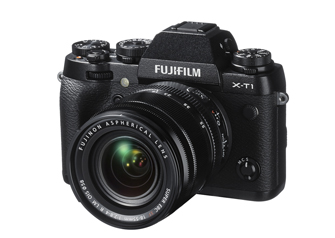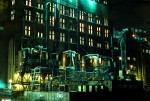Oct
24
2014


I shot a roll of Cinestill 800T in my Minolta X700 mostly of very dark things with bright lights, what can I say I like the halo’s it creates (For an explanation of what and why see this post Niagara at Night with Cinestill). unfortunately the roll I had may have come from an early run before they say they improved the process or just a faulty roll. So most of the images on the roll have residual rem-jet coating that makes some of the images appear like you’re looking through a glass of Guinness Stout.

That part is a bummer because some of those images can not be redone but I emailed Cinestill and notified them and they offered to send me replacement rolls for my remaining film in case other rolls are similarly afflicted. Now you might be thinking well of course that is the right thing to do and I agree but for them to do it so quickly and without further hassle to me is what I consider excellent customer service (Pretty much the opposite experience of all the failed Apple charging cables I’ve had to contend with). With some editing I am able to minimize the impact of the rem-jet and salvage the images at least for the purpose of sharing but really what matters to me is that Cinestill re-established my confidence in shooting their film and I look forward to shooting even more of it.
Here are some of the better files from the roll with the faults more visible than others even after editing to minimize them.
1 comment | tags: Cameras, cinestill, film, Photography | posted in Photography, Processing
Jun
8
2014
One of the great things about photography is the near limitless subject matter. Even when presented with those same subjects or locations two photographers are likely to come away with something very different. There is a new mall in our area and Duncan of DLT photographic and I went to have a photographic look. The place has many different materials and surfaces and being new also has a very modern hard-edged look. Duncan recently posted his images in a blog post High Street (day version) and now I am posting these as a counter point.
Even though this is only a selection from my images there really are not any images that are that similar. So despite photographing the same place we were seeing it differently.
no comments | tags: Cameras | posted in Cameras, Photography
May
25
2014

They really aren’t kidding with this film when they say handle in subdued light. I thought that for the most part I had been careful yet the film ended up being heavily light struck. All indications are that the light came in through where the film exits the canister so none of this would have been while the film was in the camera. What makes this film unique is that it doesn’t have the usual orange dye masking of nearly all other c41 colour negative films. This is supposed to make it easy to scan and more versatile in different lighting. Unfortunately for me the light leak over rides any other factor of this film. That being said even those images struck by light have a certain look that makes them unique and clearly sets them apart as being from film.

I shot this roll of film in my trusty Yashica Electro GT


no comments | tags: Cameras, film, Photography | posted in Cameras, Composition, Photography
Apr
19
2014


This is really two posts in one. How good the Fuji St701 is with Pentax Lenses and how terrible the Ziess Flektogon 35mm F2.4 is. It started when I pulled out some M42 lenses to put together a complete kit centered around my Fuji st701. The other lenses are Pentax Takumars (28mm f3.5/50mm f1.4/ 135mm f3.5/200mm f4) but I also wanted to give the Zeiss Flekton 35mm a try. Wow what a terrible lens it’s like a Lens Baby without the configurability.

In case you thought that was a one-off aberration here is some more eye candy.

There are many cases online of people who are happy with this lens but it seems to me that most instances of this are of people using it on digital cameras with smaller sensors and therefore only using the center portion. Perhaps I have a case where my lens has some mis-aligned element but it seems properly centered so I think that is doubtful. I just think that wide open it’s not that good.
Now for the other part of the post. I think the Fuji ST line of cameras are probably the best cameras available for the M42 mount. They have an exceptionally bright viewfinder and are very well-built.
As a side note it may be a bit of a stretch to say that the latest Fujifilm digital camera the X-T1 has ST701 DNA in its design but that camera does look nice. 
Here are some images shot with the other lenses and maybe one or two from the Zeiss you might be able to spot those ones.
1 comment | tags: Cameras, film, Fujica, Photography | posted in Cameras, Photography
Mar
26
2014
This is such a tiny camera, it ‘s hard to convey just how small, thankfully I took a photograph.

That is of course a 35mm film canister which it does not use (It’s an APS camera). The camera is so light and small it can easily be slipped into a coat pocket or an empty crevice in a camera bag. Unfortunately this camera will very soon be a film orphan as the world-wide stocks of expired APS film dwindle but at least I gave it one good run before it goes into the cabinet of curios beside the Fuji Q1
1 comment | tags: APS, Cameras, film | posted in Cameras, Photography
Jan
3
2014
Some ideas are better in theory than in practice. For instance despite the seeming awesomeness of mounting a lens and shutter on a camera that already has a shutter it proved to be less awesome than anticipated. The problem is if I use the camera’s shutter then I have to set the other shutter to bulb and keep it open and if I want to use the lenses shutter then I need to put the camera on bulb and trip the shutter on the lens. It’s all too much trouble and the fact that to get the focus right I would need to do some fine tuning of the lens to sensor distance I’ve decided to quit while I’m only slightly behind.

no comments | tags: Cameras, Pentax | posted in Cameras, Photography
Nov
23
2013

I love the variety of design with older cameras despite the similarity of materials every one of these cameras is unique.
You can view the 288 Mpixel zoomable version by clicking on the thumbnail bellow (Warning it contains about 80Mbytes of data in total)

3 comments | tags: Cameras, Pentax | posted in Photography, Processing
Sep
12
2013

Previously I looked for the point at which digital image capture exceeded film for the average snap shot Film vs Digital the battle of 2001. This time around I’ve chosen two different cameras available in 2001 both higher quality and with zoom lenses.
The two cameras are the 4.1 Mpixel Canon G2 with its 1/1.8″ CCD sensor and 34-102mm (35mm equivalent) f2.0 – F8.0 lens against films Canon Sure Shot Classic 120 and its 7 element super Spectra coated f4.5 -f10.9 lens using Kodak Ektar 100. I shot the Canon G2 set at 100 ISO through out.
The Sure Shot Classic 120 was released in 1999 and the Canon G2 came out in 2001 but seeing as film cameras age far more gracefully than digital cameras I think it’s a pretty good comparison, besides there were not many more film cameras being developed at that point.
Looking at the images as the same size side by side it is immediately apparent that for web-based or small prints up to 5×7 there is little difference between them although the Ektar turns out to be less grainy. I think it would be more evenly matched if I had used a lower grade film like Fuji Superia.


It’s only when you look at printing larger sizes that it become apparent that film has the clear advantage.

Another thing that isn’t readily apparent is the fact that I had to slightly adjust the exposure a lot with the Canon G2 to prevent it from clipping the highlights something I couldn’t do with the film camera but was completely unnecessary anyway. All through this film has the advantage in dynamic range. The example bellow is without any compensation in a very high contrast situation.

As for colour the digital camera rendered them more naturally.


Conclusion
In 2001 even at about 3 times the cost digital point and shoot cameras did not yet exceed film cameras of the same type and I havent even touched on the issue of speed of operation where the G2 is about as fast taking a picture as the Classic 120 is rewinding a roll of film. That’s an exaggeration but from the time you turn the G2 on till you can take a picture is nearly 6 seconds plus about 2.5 to zoom plus 1 second to focus so you better plan ahead in the past.
I will post a gallery of images from the two cameras in a future post maybe mixing them up between the two cameras.
3 comments | tags: Cameras, Canon, Digital, film | posted in Cameras, Photography
Nov
5
2012


I’ve been thinking about how to demonstrate the difference between these two 3d “cameras” but it’s not really possible in this 2d format. So it comes down to words I guess. Starting with the screens , despite the fact that both units display a 3d image without the need of glasses the Fuji screen is far superior. The 3.5″ Fuji screen has 1.15Mpixels doubling the HTC’s 4.3″ touchscreen with 540 x 960 resolution. The images displayed on the Fuji are clearer and more colourful. The difference continues with the lenses and sensors, The Fuji has two 10Mpixel 1/2.3″ CCD behind 3x zoom lenses that provides 35mm equivalent focal lengths of 35 to 105mm. The HTC lens and sensor are a bit of a mystery to me but they are a pair of 5Mpixel units and that is halved again when shooting 3D. The fact is it isn’t much of a contest, the Fuji is better all around but then it doesn’t make phone calls or post to Instagram. The surprise reaction of people who see the 3d image suggests to me that it is still a bit of a gimmick, this is also true because of the difficulty of doing anything with the 3d image. I don’t own any other device to display 3d images so they really are only of interest on the camera itself for now. In a sense when I’m taking 3d pictures I’m hedging that they will be of greater interest in the future. This is almost a truism of all photography as they represent a moment in time that won’t be repeated. I’m just doing it in an extra dimension.


The first image is down-sampled from the 7Mpixel Fuji file and the second from the HTC’s 2Mpixel file. At full resolution the difference is much more apparent.




This mix of samples from the two “cameras” are being displayed as animated GIF’s or wigglegrams. The two images are toggling back and forth giving a view as if you stopped time and moved your head from side to side, you can stop time can’t you?
1 comment | tags: 3D, Cameras, Digital, Fuji, HTC | posted in Cameras, Photography, Processing, Uncategorized
Jun
30
2012

I’m always on the lookout for obscure photography items I can use or put on display so I hit the jackpot here. I picked this stuff up from an antique shop for about the cost of one of the batteries at a store. I’ve already put a hard to find battery into my Canon 110ED camera and will also put that roll of 110 in the picture into it too. The old vials of developer are going to go on display along with the empty box of Kodak sheet film.
2 comments | tags: batteries, Cameras, film | posted in Cameras, Photography






















































































































